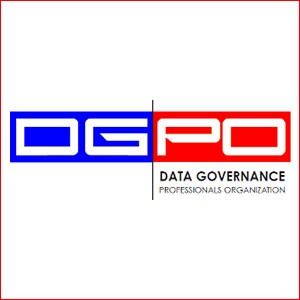
Globalization is here and competition is beyond boarders. Corporate survival will need a solid corporate strategy with an accompanying data strategy. Having a data strategy will enable data-driven decisions.
Developing any strategy is challenging because strategy is more of an art than science, but we did find in a Prophet article titled “Successful Business Growth Strategies: 5 Key Components”, that a successful Corporate Strategy should include a:
– Value proposition
– Long-term vision for innovation
– Process for social networking
– Plan for sustainable growth
Much like a corporate strategy, the data strategy requires much of the same. Having a data strategy is the backbone to data-driven decisions.
Below we mapped the DGPO hexagon to the success components of a corporate strategy:

Data Government Framework (Hexy)
Value Proposition Maps to “Fundamentals”
Why? A data strategy should “protect the crown jewels” while still ensuring the “right people have the right data at the right time.” Yet, many companies, except through tribal knowledge, do not even know what data exists.
A recent survey [reference not available] showed that 73% of data gets created and never used. Yes, that means most companies only use 27% of the produced data. All this extra data is adding minimal value– while IT expenses on infrastructure goes up and up. Along with the infrastructure footprint the extra data also raises security risk/vulnerabilities.
Should this footprint get reduced? It is hard to tell. The question becomes if users knew it existed and could get access would they use it?
Hmm…, so what is the solution? First of all, data, should be given just as much importance as any other type of corporate asset. Knowing what data exists & where it exists is essential to user effective decision making. User access to corporate data must be available to support business processes and decisions. The access cannot be wide open to any user at any time. The access must have rules/protocols to protect the crown jewels (data). What happens to data in the organization, supports the growing demands from regulators (GDPR, CCPA, etc.). It also saves time. This time savings adds to the value proposition of enabling data-driven decisions.
Long-Term Vision and Innovation Maps to “Communication”
The corporate strategy’s long-term vision and innovation should address business direction. The complementary data strategy must be a supplement. A data strategy must communicate the high-level data roadmap. The roadmap should show how and when data will be helping transform the business. It should also help tell the story how data will help identify and meet consumer demands. Example: For the past year consumers have relied more, on digital, than ever before in history. With such a rapid shift, our data strategy must be able to communicate and pivot.
Process for Social Networking Maps to Organization and Stewardship
Another major opportunity for a data strategy is to address data quality. Effective data quality requires a facilitator (Steward) and network participation (Organization).
To understand this, we need to understand what data quality is and how to achieve Data Quality. Data quality means the data are fit for consumption and meet the needs of the organization. So how is Data quality agreed upon and achieved?
The Data Steward works across lines of business (the organization). They define meanings of such things as customer, location, a sale, and/or procurement. As part of understanding what the data are, they also define what the data are not–what is acceptable/tolerable. Example: Can a customer’s transaction date be before the year they were born?
Once defined, the organization needs to understand and/or challenge the meaning until in agreement. When an agreement is reached, it is then published and accessible. This process fosters consistency and interoperability. All these efforts drive confidence.
Process for social networking from the corporate strategy facilitates alignment across the organization. The Steward then is the educator and decision maker to ensure on-going adherence.
Sustainable Growth Maps to Process and Metrics
Forbes article entitled, What Does Sustainable Growth Really Mean?, defines sustainable growth to mean growth that is repeatable, ethical, and responsible to, and for, current and future communities.
So, how does sustainable growth map to process and metrics? Process and metrics are how data measure trends (growth/decline) of the business. It is the data that generates key performance indicators (KPIs). The corporate strategy defines the KPIs as part of defining sustainable growth. Data feeds indicators with facts to make necessary adjustments and ensure sustainable growth.
Conclusion
Corporate strategy, with an accompanying Data Strategy, are complementary. As applications and machines generate more data daily, a data strategy is vital. To give perspective, here are two metrics:
– At the end of 2020, 44 zettabytes made up our digital universe
– Within the past 2 years, the amount of data in the world grew 90%
via TechJury
To survive, corporations must be strategic. Executives must understand and communicate the importance of data. It is essential that corporate leaders realize the asset-that-is-data. Data drives sustainability, growth, and innovation. When executives champion data and data strategy, they will be more adept at handling the massive digital challenges ahead.
If your company already has a Data Strategy and/or Data Governance Program submit your Best Practices for the 2021 DGPO Data Governance Best Practice Award. You do not need to be a member of the DGPO to submit an entry.
